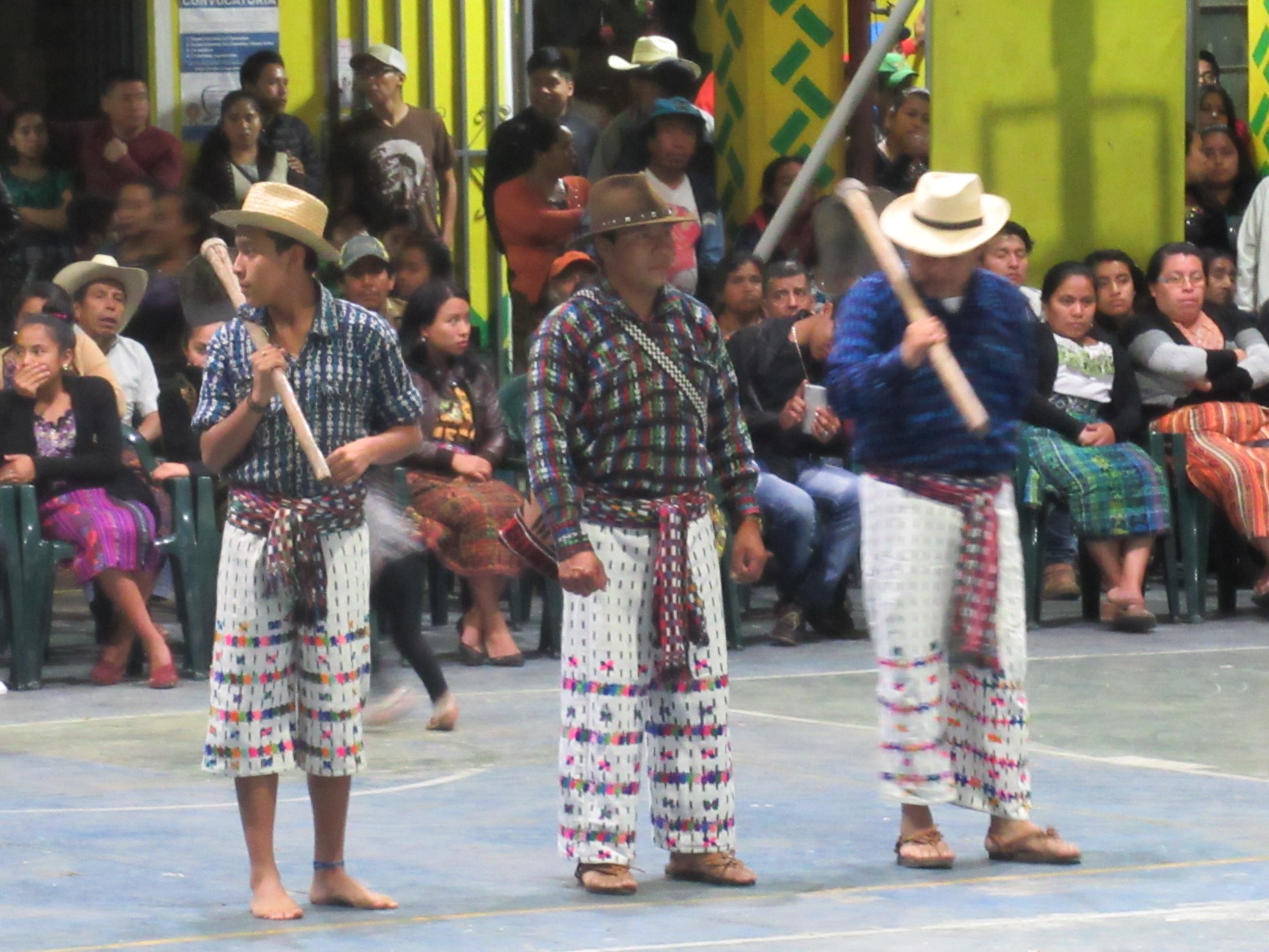When I lived in Bhutan, I wore the local outfit whenever I went out in public, which was almost every day. Since the locals had to wear them most of the time, it seemed respectful and a good way to experience the culture directly. While some locals made fun of me, thinking I was a tourist, I felt that everyone who knew me appreciated the effort.
I remember buying comfortable cotton pants in Cusco to match the clothes the Incans wore, and would have been happy to do the same in Guatemala. In fact, I came with few clothes because I planned to buy everything here, but it wasn’t to be. The men here wear jeans and t-shirts. I’ve been told twice that the Mayan men’s clothes are too expensive for them to wear, so I believe that’s an important consideration, but the women wear more ornate hand-woven outfits, so there has to be more to it.
Our cooking instructor had another theory. She told us that during the civil war, which ran from 1960 to 1996, men and boys were taken to be trained as soldiers for both sides. And the fighting had a tit-for-tat mentality that meant men of certain villages would be killed in retaliation for something another villager did. The risk of being drafted or targeted was higher for those wearing clothes that identified which village they came from, so men stopped wearing their traditional clothes. When the war ended, the art of making men’s clothes had been lost and the men were used to wearing western clothes anyway.
My Spanish teacher believes it’s because the traditional clothes are inappropriate for the lifestyle. In San Pedro La Laguna, the trousers are white, which would get dirty too easily in the fields and workshops where most men spend their days, and the shirts are too thick to be comfortable in the heat. She says that the trend for both men and women is changing, though. Younger men are starting to wear the traditional shirts for warmth in the evening or to cut the sleeves short, while the young women are beginning to wear western clothes.
Either way, I won’t be wearing the traditional clothes myself. Perhaps it’s for the best. Can you imagine me in those trousers?
Cuando yo vivía en Bhutan, me vestía la ropa tradicional casi todos los días. Porque los Bhutanes tenían que usarla, yo pensaba que es respectuoso y buena manera para experimentar la cultura.
Yo recuerdo comprar pantalones cómodos de algodon en Cusco cómo los Incas. Si los hombres Maya usarían la ropa tradicional, yo la usaría tambien, pero ya no se la usan. Ahora usan vaqueros y una camisa.
Mi maestra cree que la ropa tradicional de San Pedro no es conveniente para la vida porque las pantalones son blancos y las chaquetas son demasiado gruesas por la temperatura, pero me dice que la moda cambiante. Los chicos empiezando a usar la chaqueta en la tarde o cortar las mangas a cortas. Posiblimente, la ropa tradicional sera popular otra vez.
